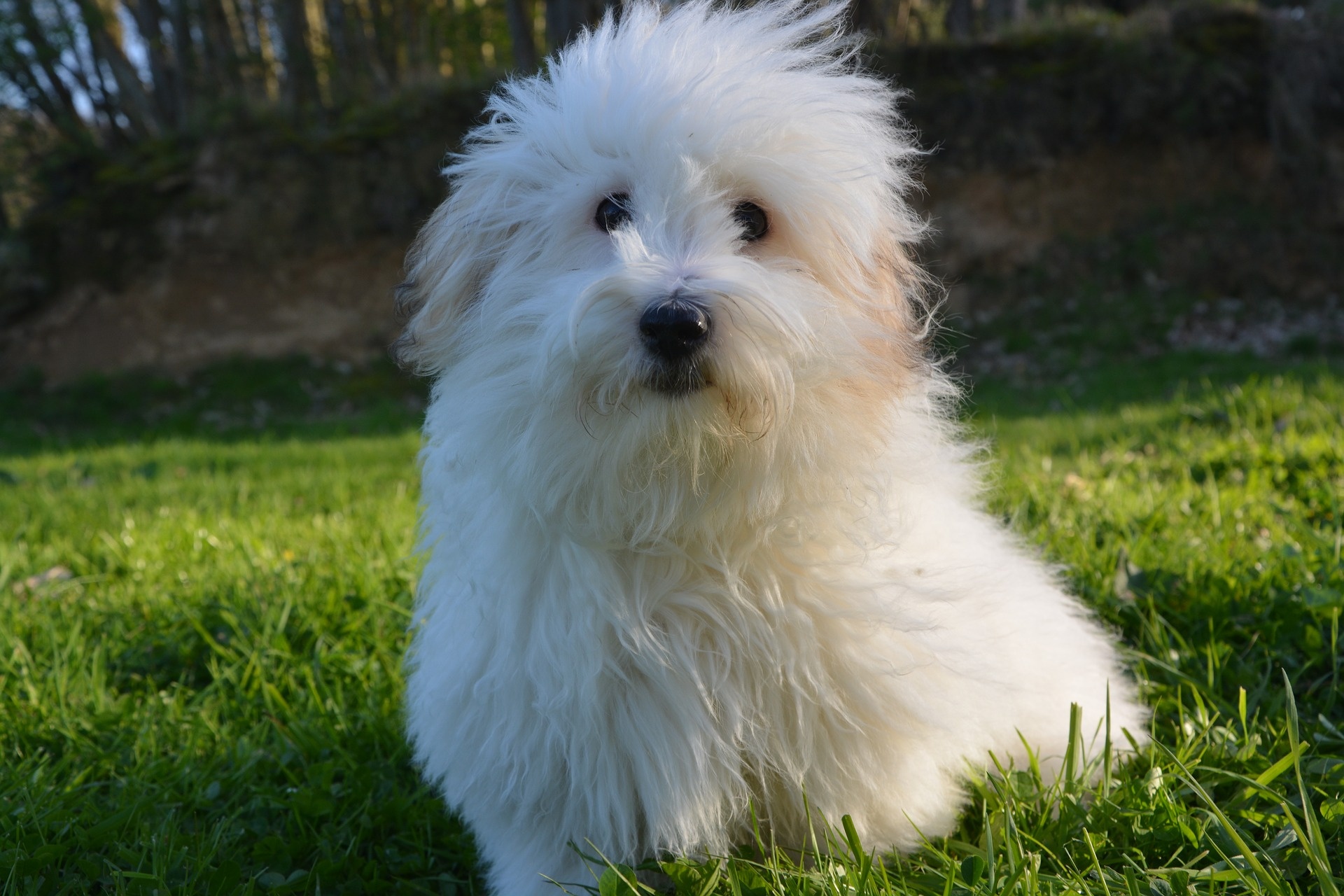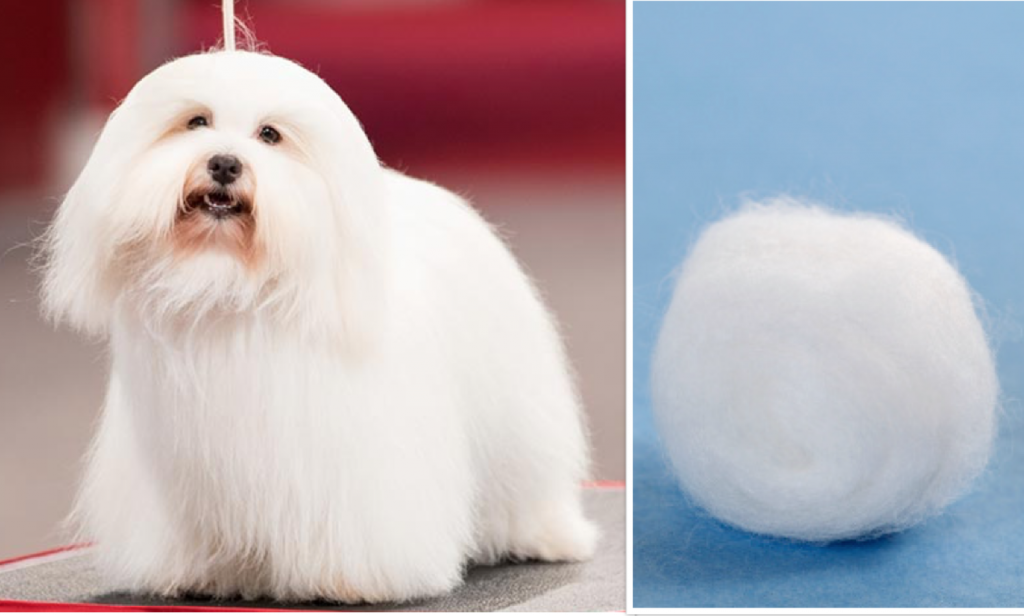
Put a good sized wad of cotton balls in your hand and squeeze. Now you know what a Coton de Tulear’s coat should feel like.

As you might imagine from its name, coat texture is one of the main characteristics of the breed (the rest of the breed’s name comes from the seaport city of Tulear, now known as Toliara). The coat should have the texture of soft, fine cotton, and one way that people evaluate coat texture really is to squeeze the hair into a ball and feel it. It shouldn’t be silky or give the impression of harsh wool; if a small amount of hair were to be twisted upright by one’s fingers, it should “stand up.” If it falls flat, it’s either too silky or thin.
The breed is presented in natural coat, some coats even reaching the ground, but coat quality is more important than the amount of coat. We think the Canadian Coton de Tulear Club sums it up nicely: The hair is long, soft, supple, dense and dry with the texture of cotton. Boom. Some might add that it should be fluffy, though “dense” is also an appropriate word.
Coton fanciers have warned against making theirs a “coat breed” rather than a breed with a coat. As such, over-the-top trimming, grooming, or sculpting are to be heavily penalized. They add that to make the dog look like a stuffed animal is not only at odds with the standard, but with the breed’s historic and natural evolution as a survivor in a harsh environment (Madagascar): This cottony coat trapped insects and served to insulate the dogs from heat and cold. Yet another case of “form” following function.
Top image from CreativeCommons. Insert photo of a Coton next to a cotton ball comes from the AKC website and is shared here with consent.
